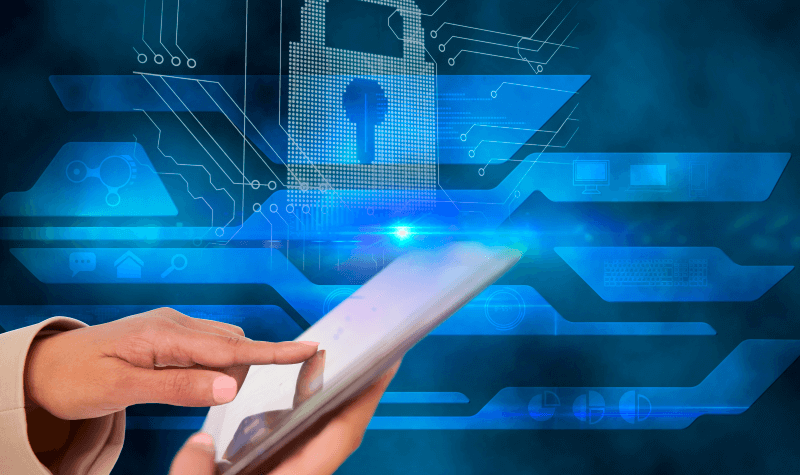
-
DURATION20 HOURS
-
SUBJECT AREAClimate Transition
Leadership -
COURSE LEVELMOOC
-
CREDITS0.0 HP
-
INSTITUTIONSUppsala University
Open for the Climate
-
STUDY TYPEMOOC
COURSE DESCRIPTION
Learn more about climate change’s impact on society and how you can lead a wide range of transition processes and practically work with climate transitions within different areas.
Ongoing and future climate impacts on different parts of society, the attempts to try to build sustainability within planetary boundaries and interconnected international crises’ have created a unique situation concerning the issues’ urgency, complexity and uncertainty. Within this shifting landscape knowledgeable, creative and brave leaders and citizens are necessary to being able to fundamentally change how businesses, regions, municipalities and different organizations work and achieve results.
This online course introduces climate science, climate change’s impact on society, different perspectives on the causes and possible solutions to the climate dilemma, climate justice and international agreements, carbon budgets and different climate scenarios, leadership within different contexts on different levels, key areas for successful transitions and different good examples of climate transitions, the individual’s and the collective’s possibilities and responsibilities, and concrete first steps towards transitions work within your work and local context.
courses you may also like

An introduction to the challenges that both public leadership and governance face in an increasingly digital and globalized world. The content is based on theories and models with global applicability, and uses examples on how Swedish public leadership and governance have met real crises. About the course This course is an accessible introduction to the challenges that both public leadership and governance face in an increasingly digital and globalized world. The content is based on theories and models with global applicability, and uses examples on how Swedish public leadership and governance have met real crises such as climate change, COVID-19, migration crisis, ageing population. The course provides an understanding of how public leadership and governance can address digitalization in sustainable ways building on Swedish illustrations. Topic covered by the course You will get an comprehensive introduction to the challenges that public leadership and governance structure will face through digitalization process.Engage with the topic through your own work and reflection and practice on peer-review on a particular topic.Engage with a selection of relevant and up-to date literature that will be accessible through the course.Who can take the course?The course is open to everyone and free. There are no requirements for prior knowledge or special qualifications to participate in the course. Course structure The course is web-based and is conducted entirely remotely via a web-based course platform. It is divided into four modules: First module will give an overarching introduction to the overall concepts of sustainability, digitalization and democracy. We will be staying mostly conceptual and theoretical in the first week. At the end of the week there will be a digital quiz and an scrapbook assignment. Second module there will be a discussion around institutions and what digitalization has meant looking at practical examples such as Transportation agency and the Linköping Municipality. At the end of the week there will be a digital quiz and an scrapbook assignment. Third week will delve more into the practical implications of diglitalisation for areas such as E-government, social services and health care. At the end of the week there will be a digital quiz and an scrapbook assignment. The last module will be based around self-study and the compilation of a scrapbook that will be uploaded to Lisam and then discussed and reviewed in an online forum setting. Each participant will produce one scrapbook and review three different scrapbooks during the last module.

What can we do to address the sustainability challenges we face? In this course, you will gain insight into how individuals, organisations and societies approach sustainability challenges in different ways. In various parts of the world different challenges are prioritized and thereby, various approaches and solutions are needed. You will learn about the considerations needed to make decisions of how to prioritize sustainable development. You will also be introduced to different strategies for changing values, attitudes and behaviours. The course introduces enforcements that are applied to influence individuals within companies and in the society at large, including different incentives and instruments to ensure more sustainable behaviours. This course is relevant to professionals working in industry, policymakers, or students in engineering. What you'll learn Identify and prioritize solutions based on different perspectives About how the values, attitudes and behaviours for sustainable development are connected About different environmental management tools How to implement organizational learning, incentives and instruments to change behaviours for sustainable development Concepts used in the current sustainability debate See all free online courses that KTH offers

This course emphasizes that systems-based changes are needed to achieve a sustainable world. In the past, dominant theories of change have neglected these complex conditions. In part, it includes the belief that change can be managed, planned, and controlled. This course suggests more contemporary theories where you are more inclusive, being many stakeholders and use fluid ways of creating change. Similar compositions of ideas have been tested in the honours track Change Maker Future Track at LU School of Economics and Management. At the end of the course, the participants will have a better chance of: a. Understanding of the systemic nature of sustainability b. Understanding of systems theory, and the concepts of complexity and wicked problems c. Understanding of systems innovation and change d. Having an overview of some tools for describing and analysing complex problems and contexts e. Having an overview of contemporary theories of change f. Having an in-depth understanding of the concept of Catalytic Leadership and Change

Opens in May 2025. The Swedish version of the course, namely ”Varför välja trä vid nästa byggprojekt?” is already open. For more iformation contact course coordinator dimitris.athanassiadis@slu.seCourse DescriptionDifferent types of biomaterials (e.g., wood) are crucial in the challenge of decarbonizing the built environment and reducing the carbon footprint of buildings and infrastructure by replacing materials like steel and cement, which have high carbon dioxide emissions. At the same time, we must not forget that it is important to preserve biodiversity and the social values of our forests. The 13 modules of the course cover many forestry related subjects, including harvesting methods, biodiversity, forest management, logistics, the role of forests in the climate transition, carbon storage, environmental benefits of multi-story buildings with wood, and more. The goal is that participants will gain a shared understanding of Swedish forestry so that they can make well-informed decisions about material choices for their next construction project. Course PeriodThe course will be active for 3 years. Content Forest history: The utilization of forests in Sweden throughout the past years Forestry methods and forest management Forest regeneration Wood properties Forest mensuration Forest tree breeding The forest's carbon balance Business models and market development: Focus on wood high rises Nature conservation and biodiversity in the forest Course StructureThe course is fully digital with pre-recorded lectures. You can participate in the course at your own pace. Modules conclude with quizzes where you can test how much you have learned. You will learn aboutUpon completion of the course, you will have learned more about various forest-related concepts, acquired knowledge of forest utilization in Sweden throughout the past years, increased your understanding of forest management and how different management methods affect biodiversity in the forest, and learned about the forestry cycle—from regeneration to final harvesting, etc. Who is this course for?This course is designed for professionals such as architects, municipal employees working with urban planning and construction, individuals in the construction and civil engineering sector, and those in other related fields. This is an introductory course and will contribute to upskilling of the entire construction sector, thereby increasing the industry's international competitiveness while also providing important prerequisites for the development of future sustainable, beautiful, and inclusive cities. Since the course is open to everyone, we hope that more groups, such as students, doctoral candidates, forest owners, and others with an interest in forestry, will take the course and engage with inspiring lectures where scientific knowledge primarily produced within SLU (Swedish University of Agricultural Sciences) is presented.

Målet med kursen är att ge lärare fortbildning inom ämnet djurvälfärd och hållbarhet. Kursens mål är också att ge lärare inspiration att designa sin egen undervisning, att ge lärare möjlighet att ta till sig ny forskning och att dela med sig av läraktiviteter som kan användas av fler.

Hur kan grön omställning göras så att resultatet är socialt önskvärt, miljömässigt -, samhälleligt - och ekonomiskt hållbart, samt etiskt acceptabelt? Själva uttrycket grön omställning leder lätt till ett snävt fokus på teknik och miljö. Det glöms att hållbar omställning syftar till att säkra framtida generationers möjligheter att leva sina liv inte bara i en god miljö, utan också i rättvisa och inkluderande samhällen och under hållbara ekonomiska förutsättningar. I den här kursen utforskar vi begreppet ansvarsfullhet och experimenterar praktiskt utifrån tankesätt och metoder som kommer ifrån EUs Responsible Research and Innovation (RRI) och innovationsforskningens Responsible Innovation (RI). Innehåll Ansvarsfull innovation och grön omställning EUs ansvarsfull forskning och innovation (RRI), ingående delar och verktygslåda Hållbar utveckling och grön omställning Ansvarsfullhet och aktörer, intressenter samt användare Missions, framtider och grön omställning Du kommer få kunskap om Efter kursen kan du kartlägga området där den gröna omställningen skall ske, identifiera de intressenter som bör involveras den ansvarsfulla grön omställningsprocessen. Du kommer också att kunna identifiera arbetssätt som behöver förändras och kunna delta i utvecklandet av nya arbetssätt. Vem vänder sig kursen till? Den här kursen angår oss alla, oavsett yrkesroll och även som privatpersoner. Du bör vara nyfiken på samhällsutveckling mot hållbara samhällen i alla tre dimensioner. Du behöver inte ha några speciella förkunskaper förutom att du behöver vara beredd på att läsa engelska texter. Några som denna kurs kan vara särskilt lämpad för är strateger vid kommuner och regioner, utvecklare av teknik, organisationer eller samhällen, samt personer med ett samhällsengagemang som vill vara med och påverka utvecklingen. Kursupplägg Kursen lanseras i maj och är en öppen kurs som kan genomföras online när som helst och inte kräver några förkunskaper. Kursen bygger på förinspelade filmer och poddar som vägleder och inspirerar inom varje kursområde. Dessa är kopplade till uppgifter och övningar du genomför och dokumenterar för ditt eget lärande. Språk Svenska